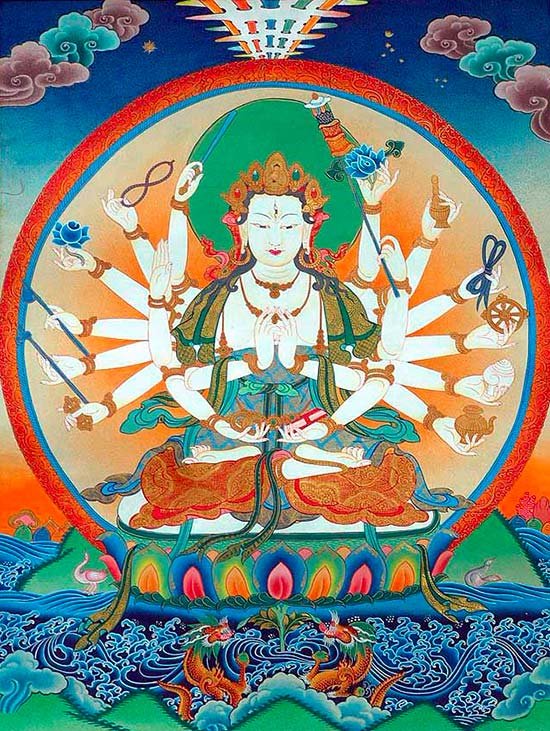Maha Prajnaparamita Sastra
by Gelongma Karma Migme Chödrön | 2001 | 941,039 words
This page describes “story of the yaksha punarva (mother of the asura punarvasu)” as written by Nagarjuna in his Maha-prajnaparamita-sastra (lit. “the treatise on the great virtue of wisdom”) in the 2nd century. This book, written in five volumes, represents an encyclopedia on Buddhism as well as a commentary on the Pancavimsatisahasrika Prajnaparamita.
Appendix 10 - The story of the yakṣa Punarva (mother of the asura Punarvasu)
Note: this appendix is extracted from Chapter XV part 10.10:
“... Why could they not receive the Dharma of the Path? See for example, in the Saṃyuktāgama, in the chapter about the gods (devasaṃyukta), the story of the mother of the asura Punarvasu”.
The beginning of the Punabbasusuttanta of which we have the Pāli version (Saṃyutta, I, p. 209–210) and two Chinese translations: Tsa a han, T 99, no. 1322, k. 49, p. 362c–363a; T 100, no. 321, k. 15, p. 481a. There are a few diffrences between these sources:
Saṃyutta, I, p. 209: Ekaṃ samayaṃ Bhagavā Sāvatthīyaṃ vihārati JetavaneAnāthapiṇḍaikassa ārmam … dhammaṃ sossāmi satthuno ||
Tsa a han, T 99, k. 49, p. 362c: Thus have I heard. Once the Buddha was travelling among the people of the Magadha kingdom with his great assembly. He came to the place where the mother of the young yakṣa Punarva was dwelling and spent the night there. Then the Bhagavat preached a sermon about the noble truths (āryasatyapratisaṃyuktadharma) to his bhikṣus: the noble truths of suffering (duḥkha), the origin of suffering (duḥkhasamudaya), the cessation of suffering (duḥkhanirodha) and the path leading to the cessation of suffering (duḥkhanirodhagaminī pratipat). At that time, the two young children of the yakṣinī, her son Punarvasu and her daughter Uttarā, began to cry during the night. Then the mother of Punarvasu scolded her son and daughter with these stanzas:
“You, Punaravsu, and you, Uttarā, do not cry
So that I may be able to hear the Dharma preached by the Tathāgata”.
Other details may be found in Sārattha, I, p. 309–311.
